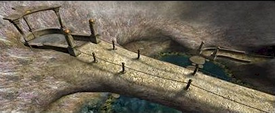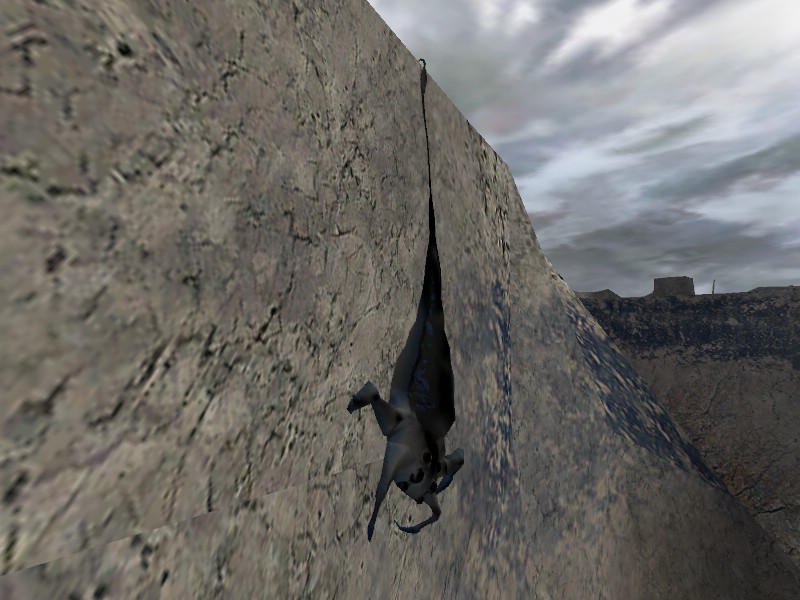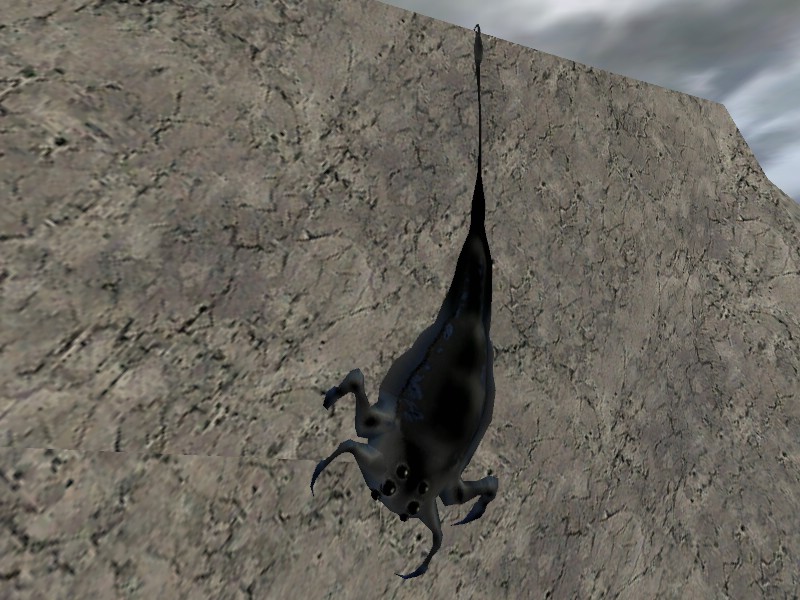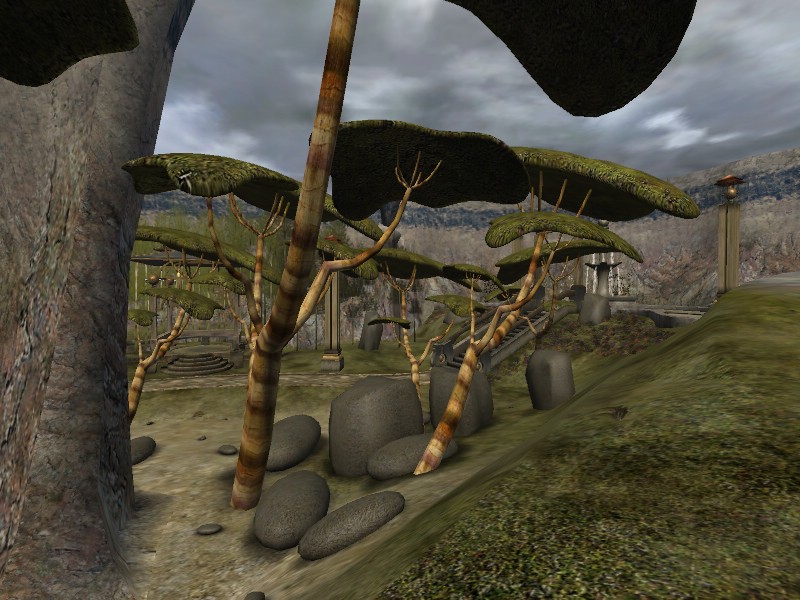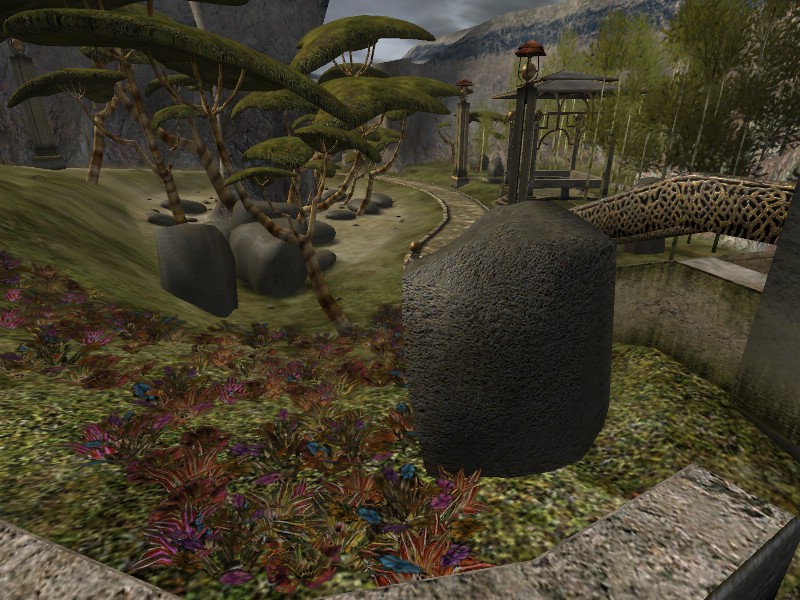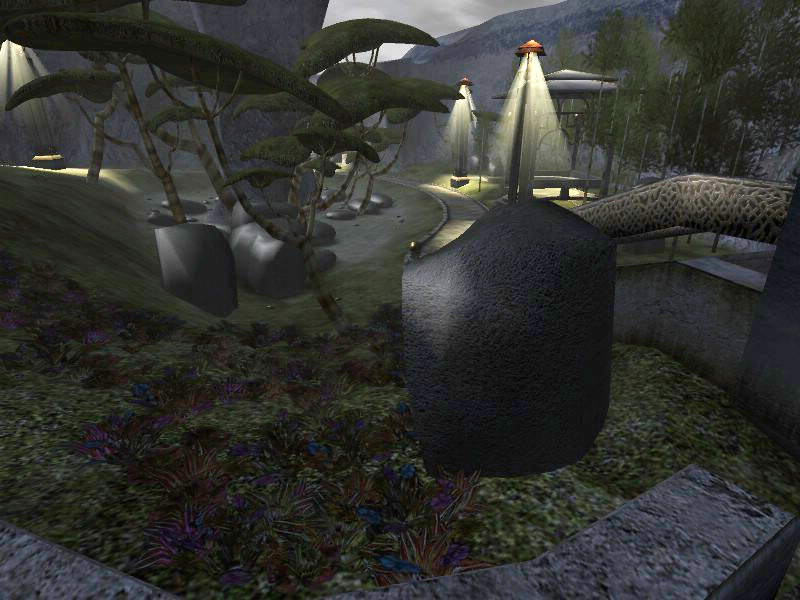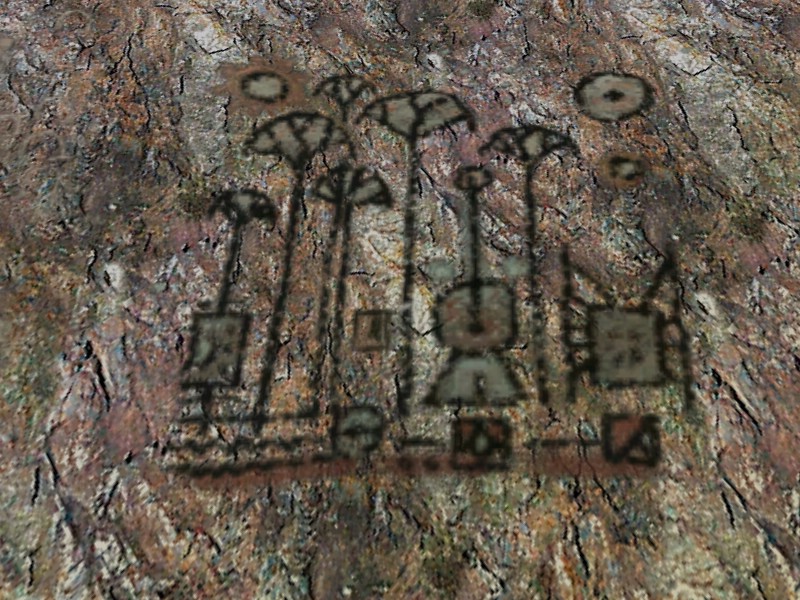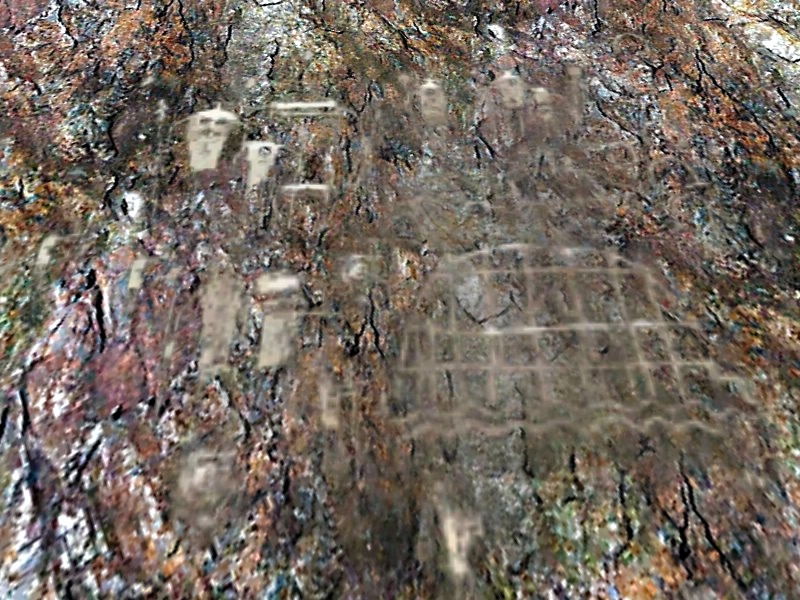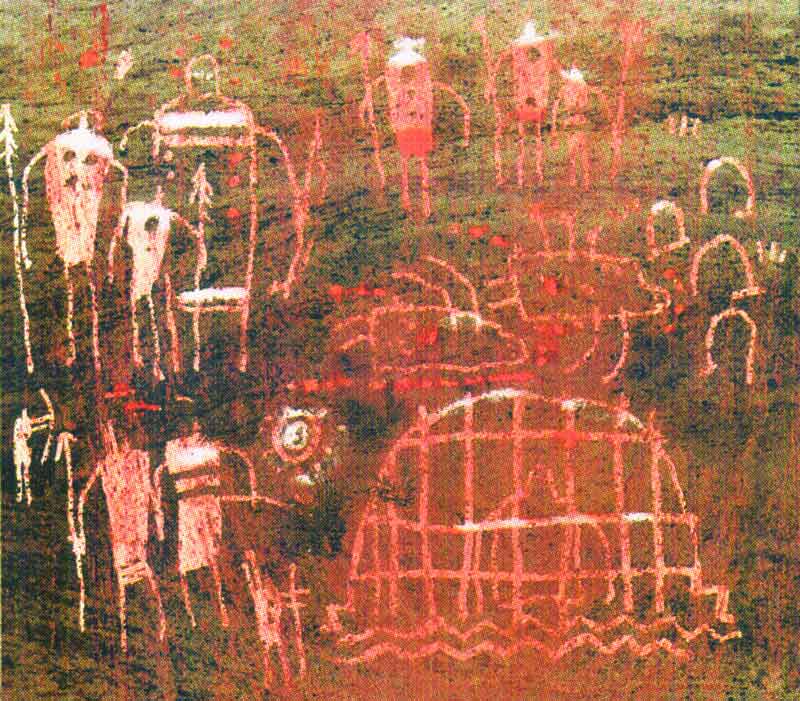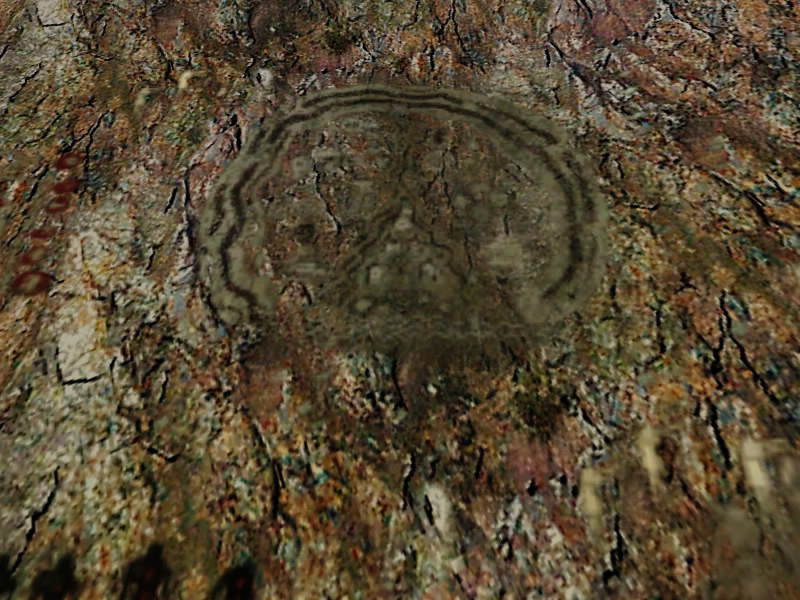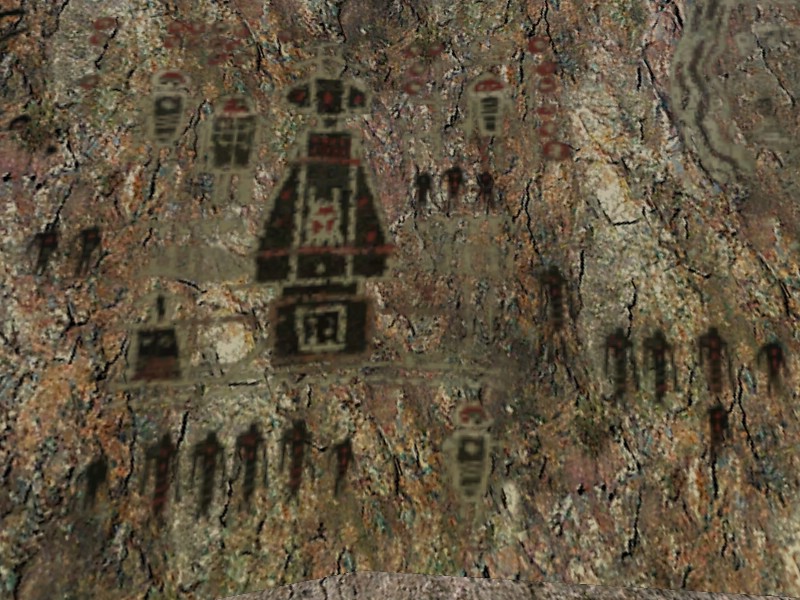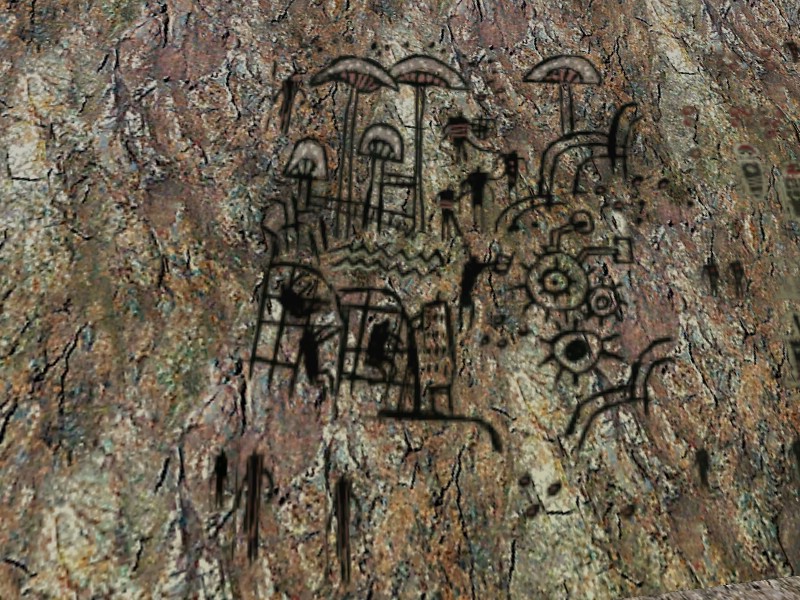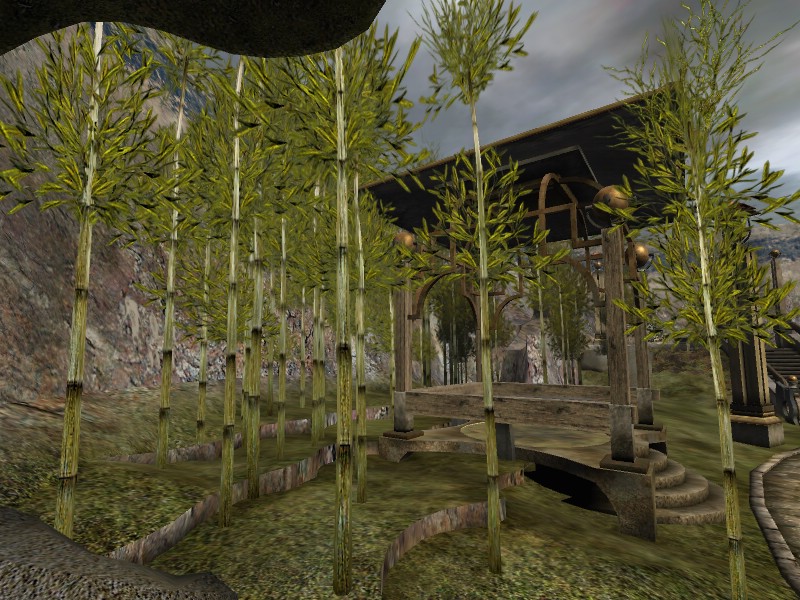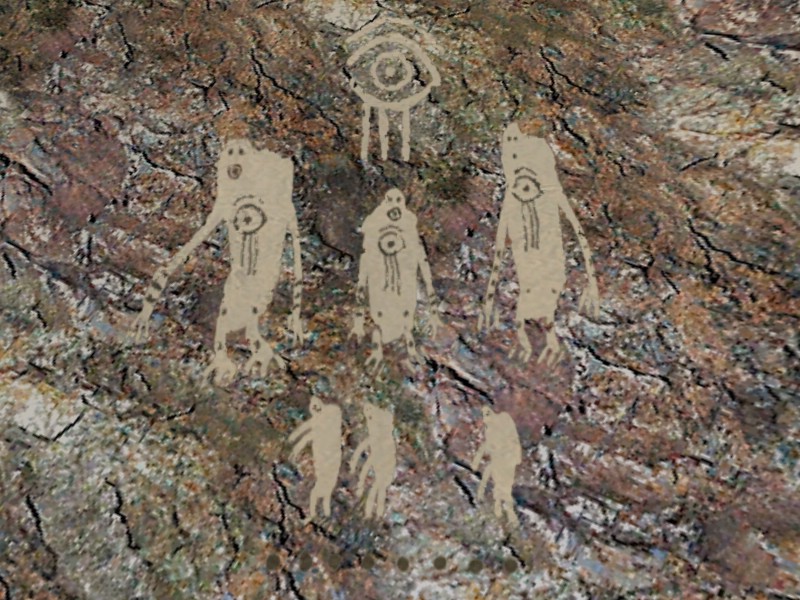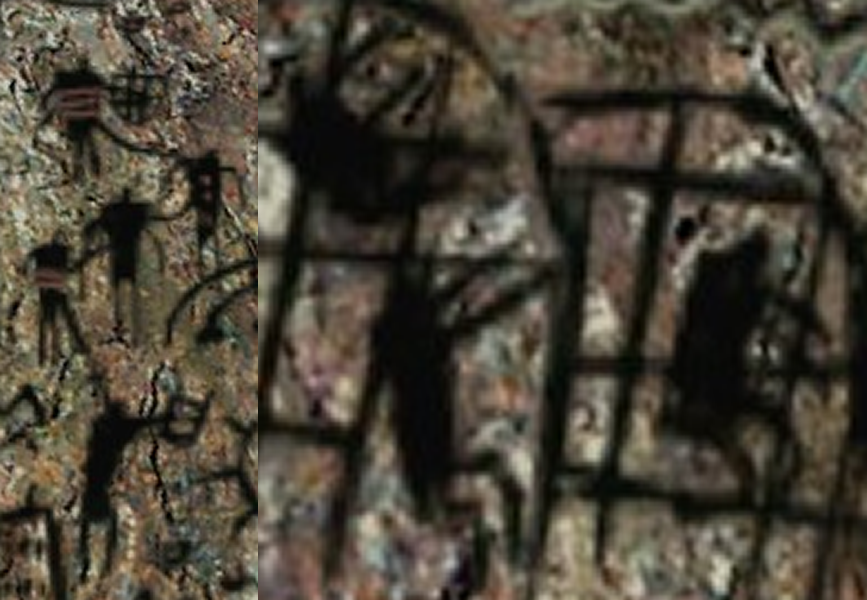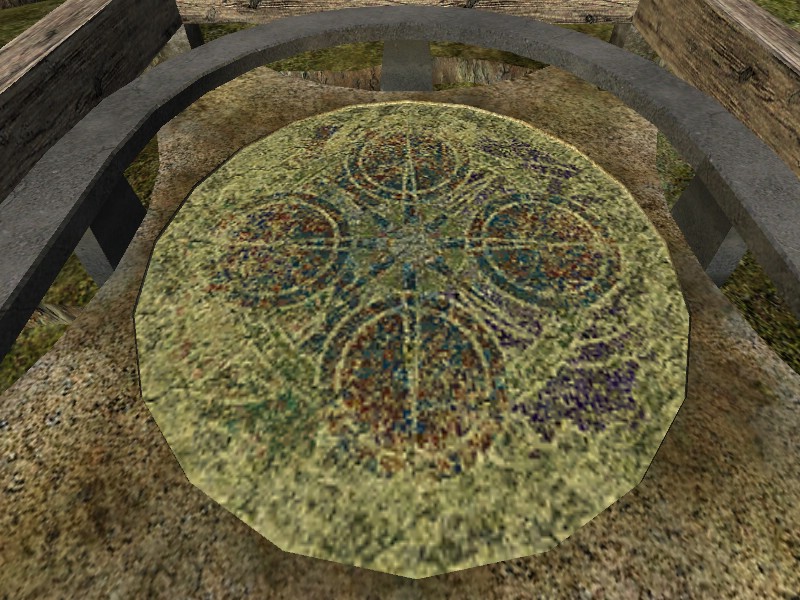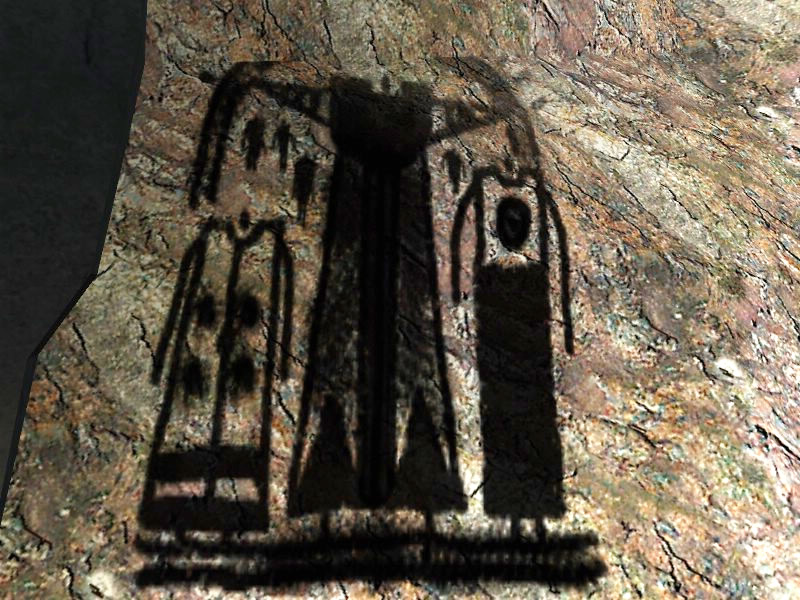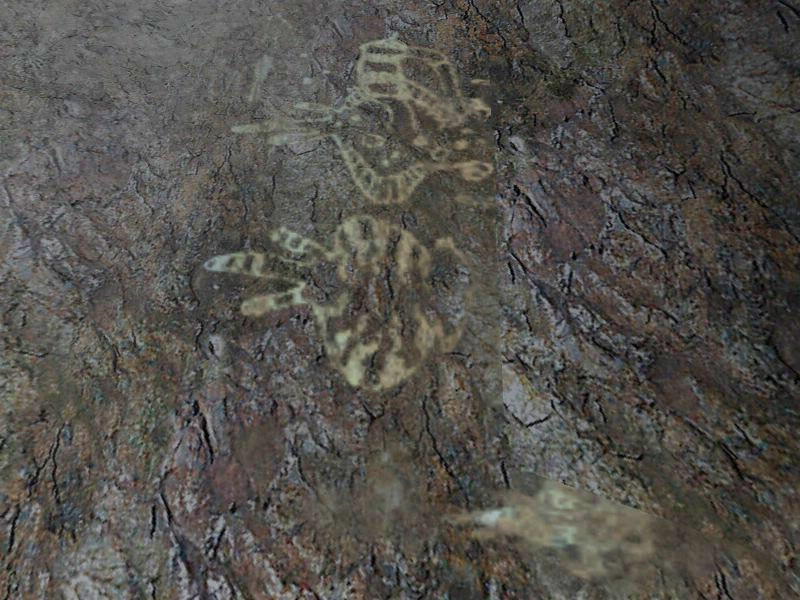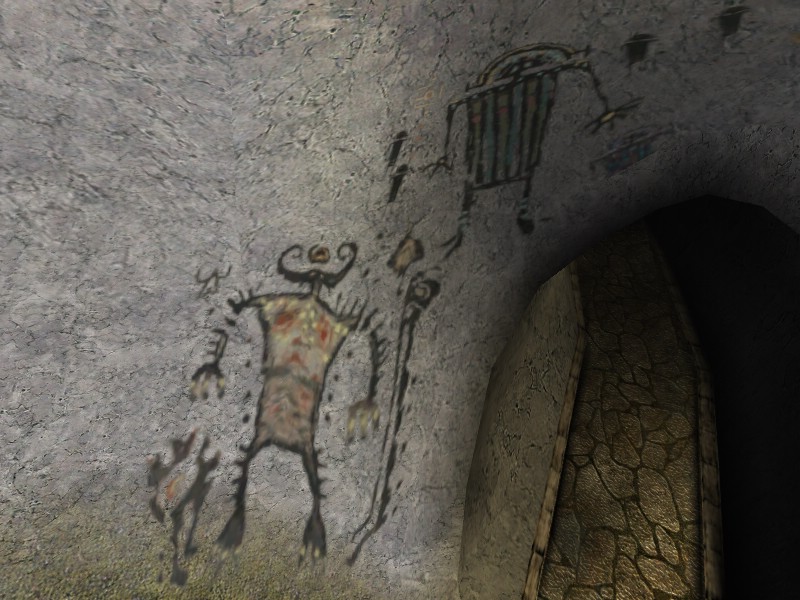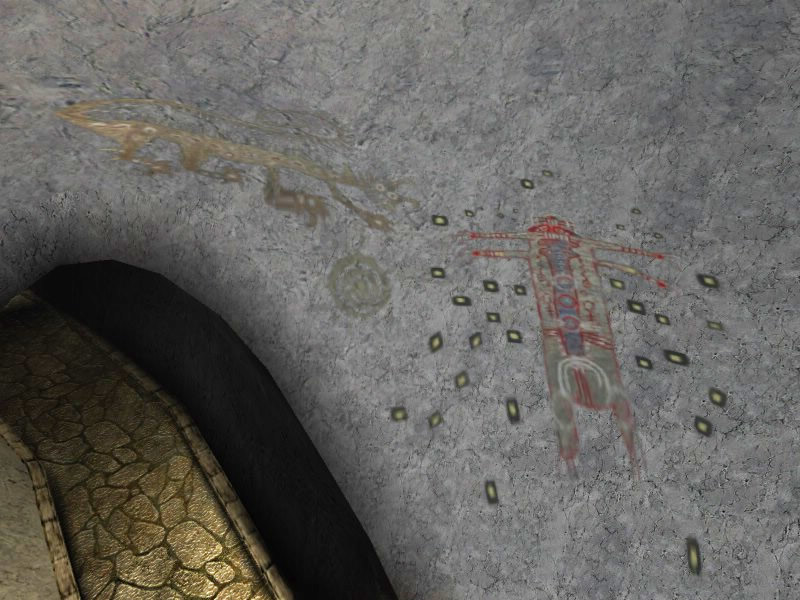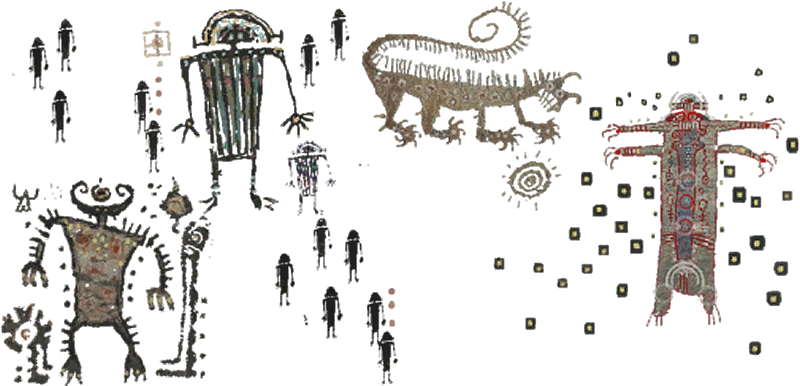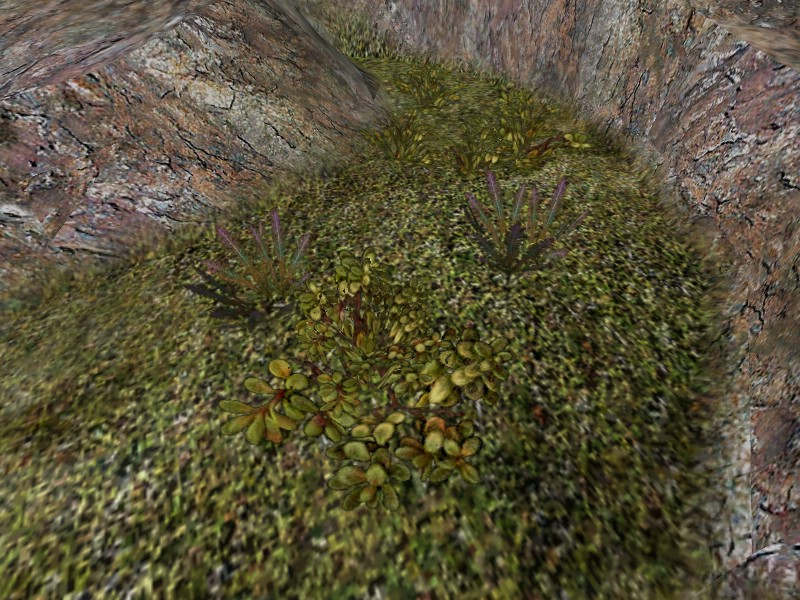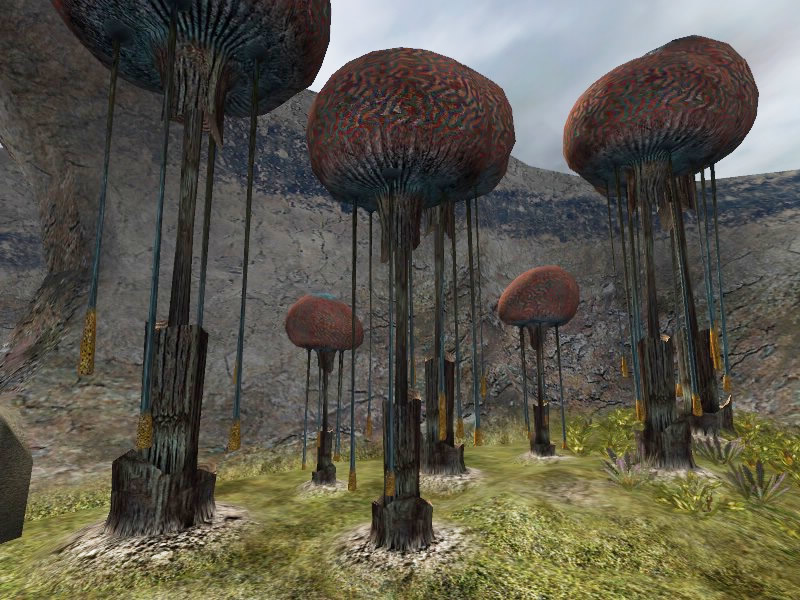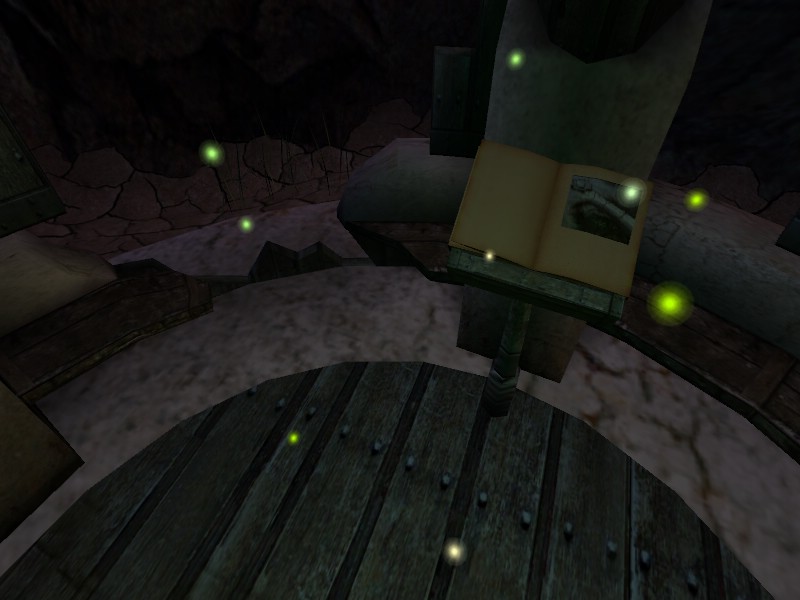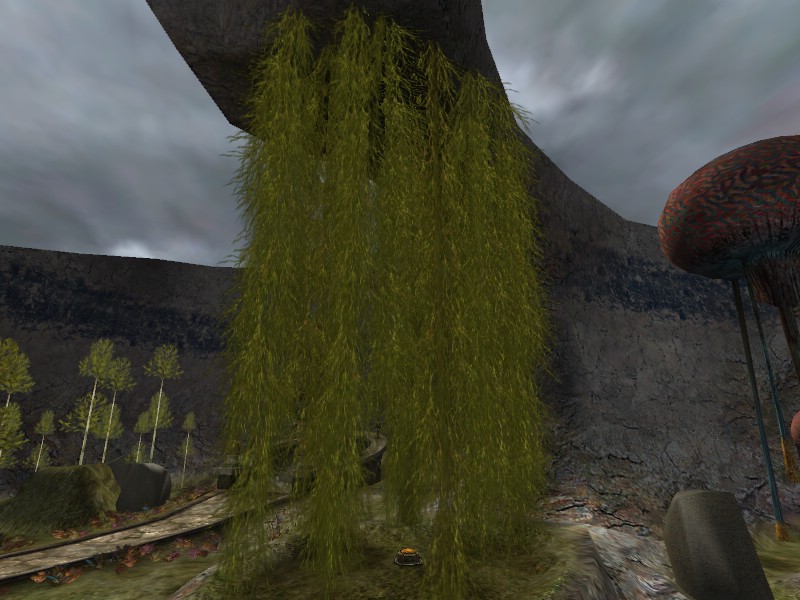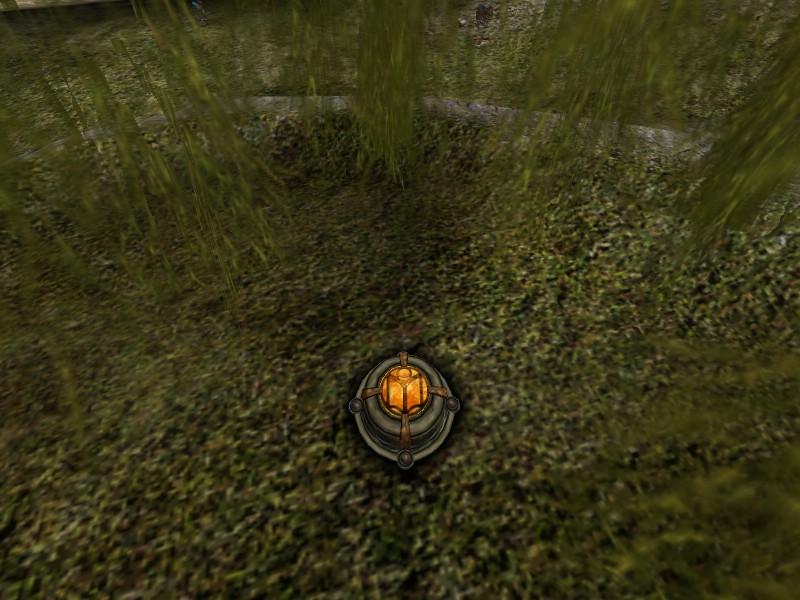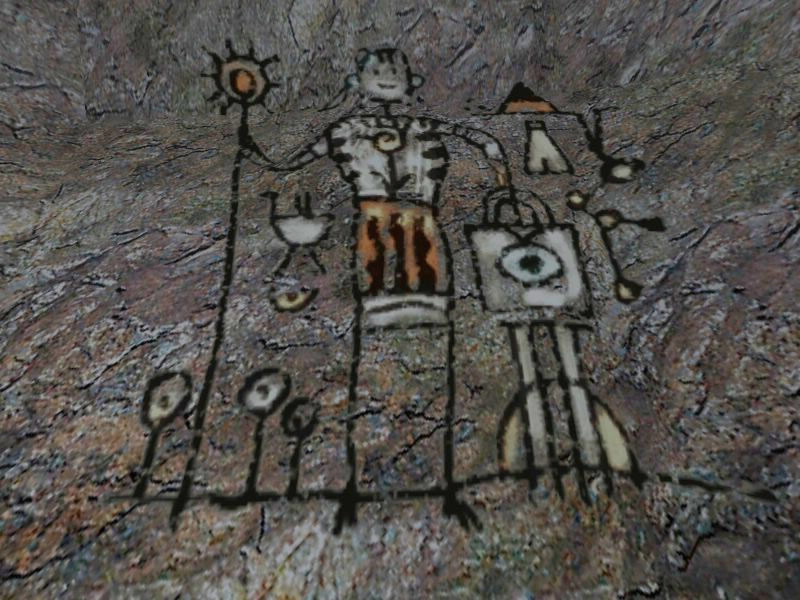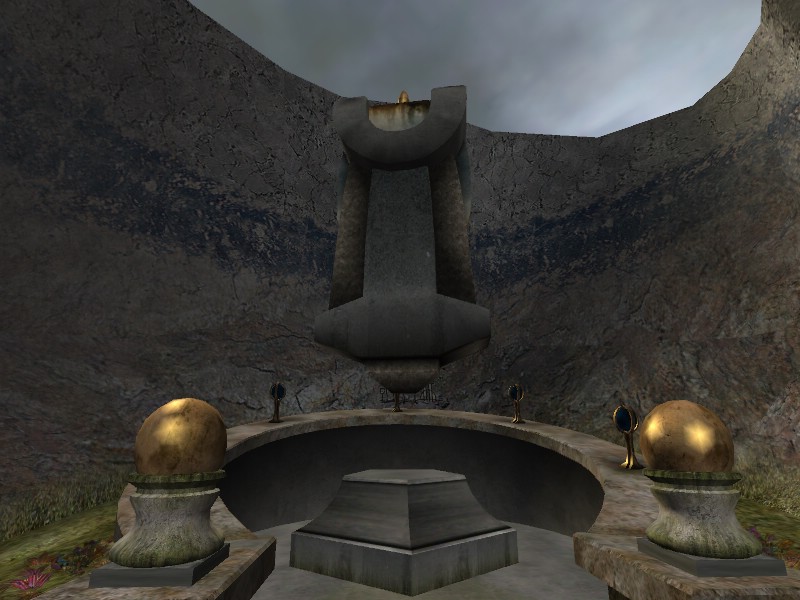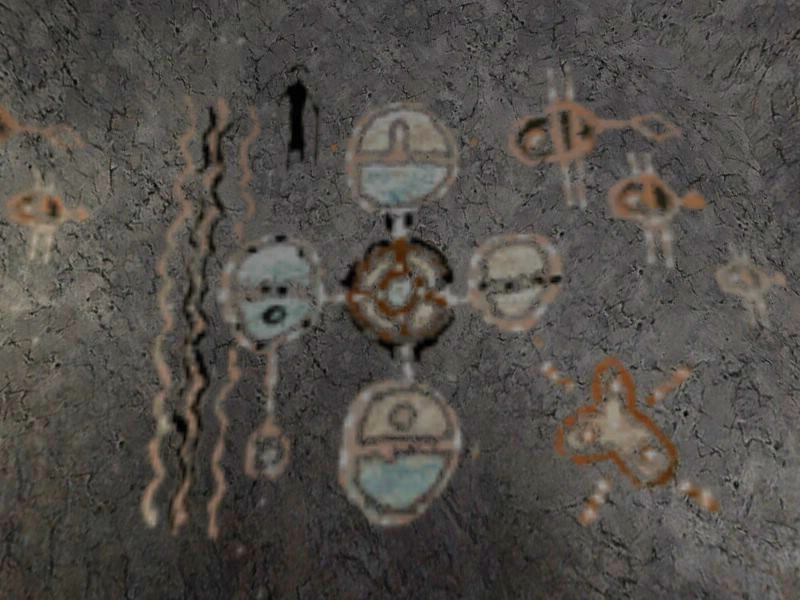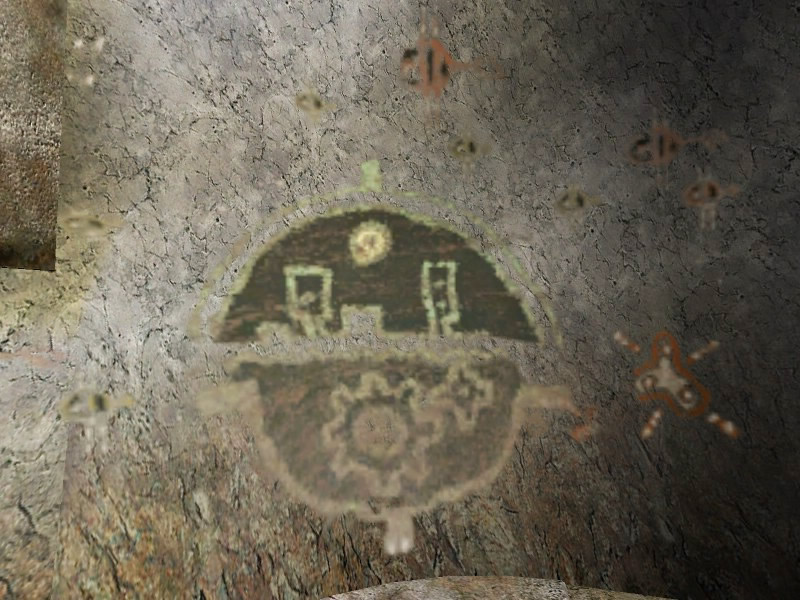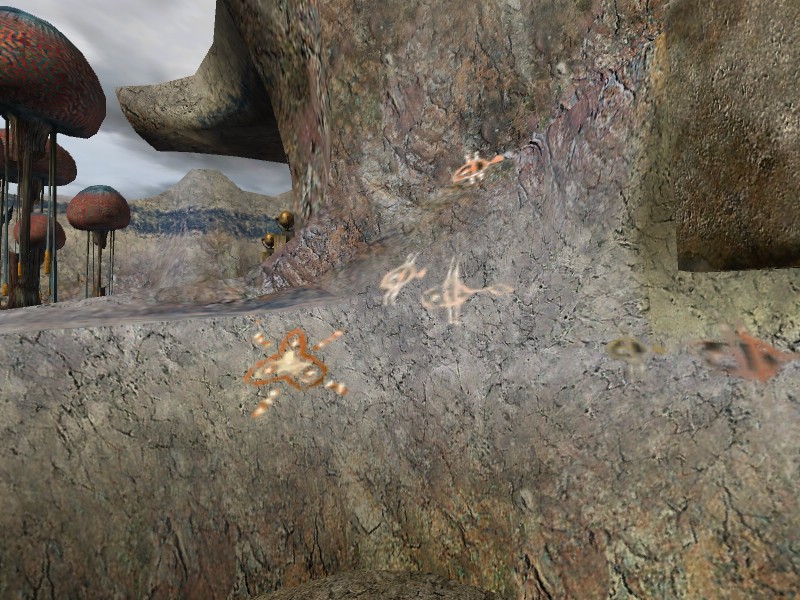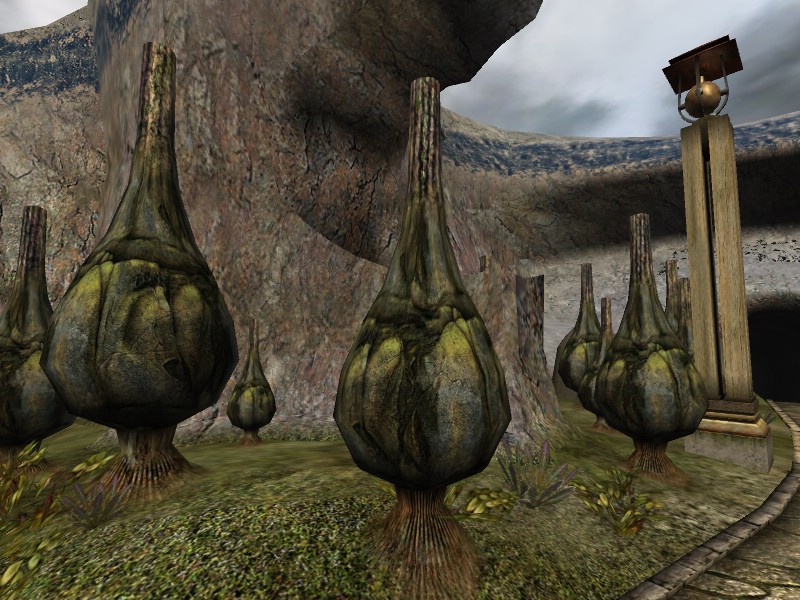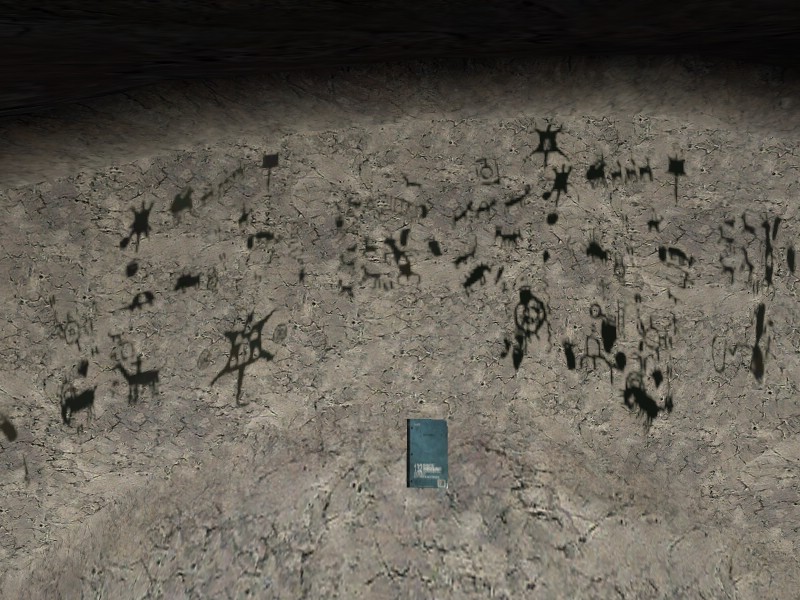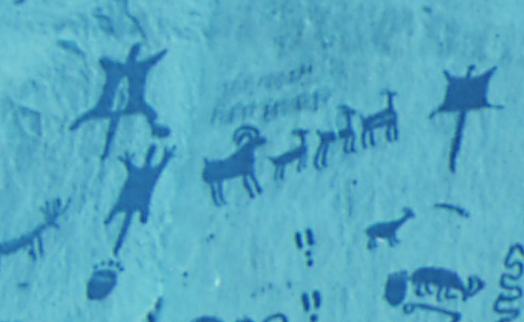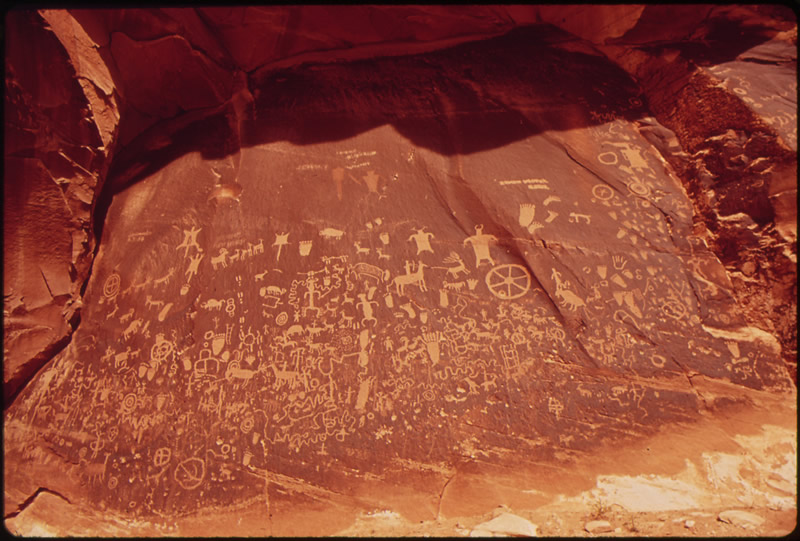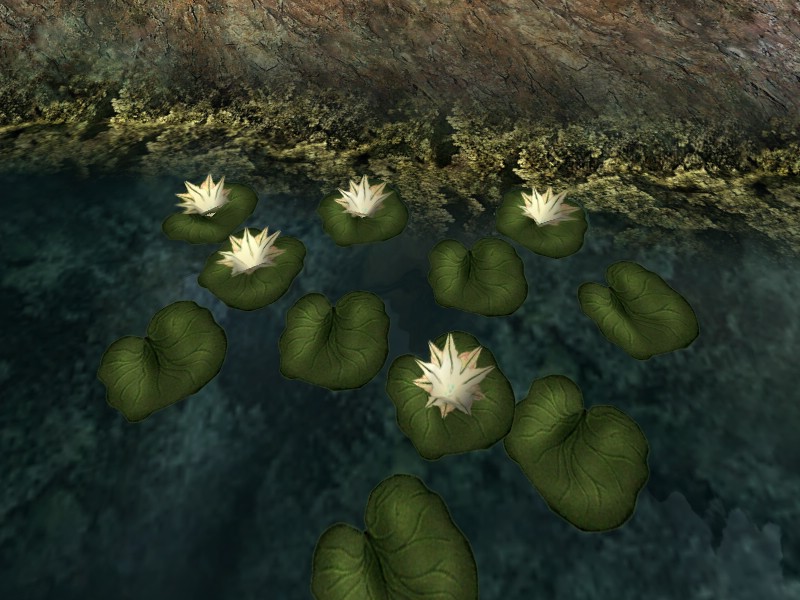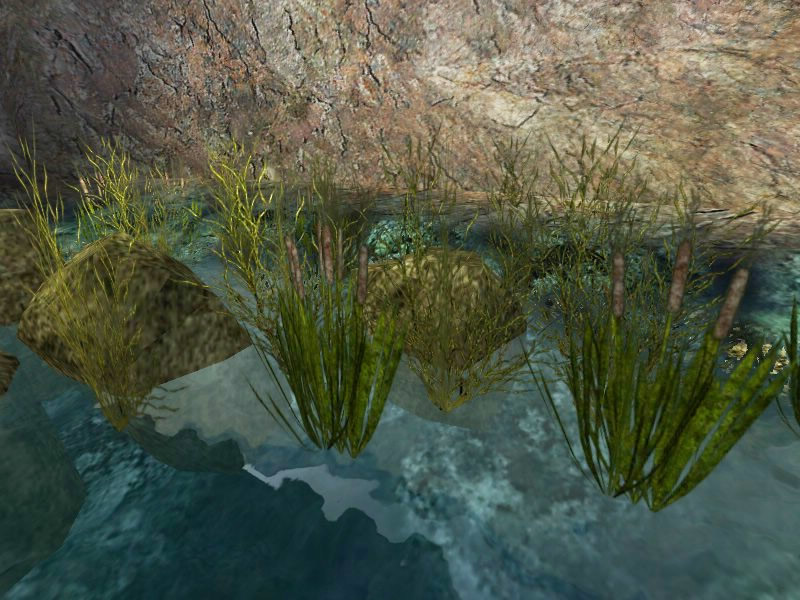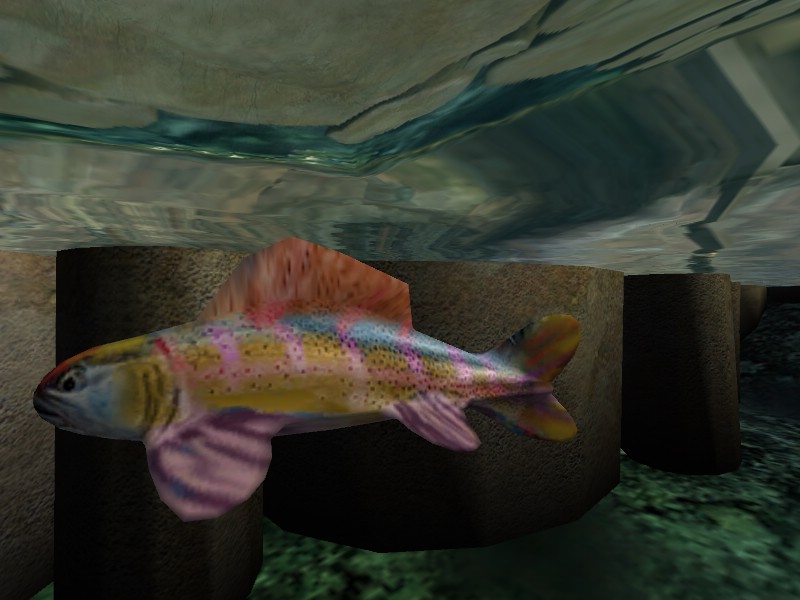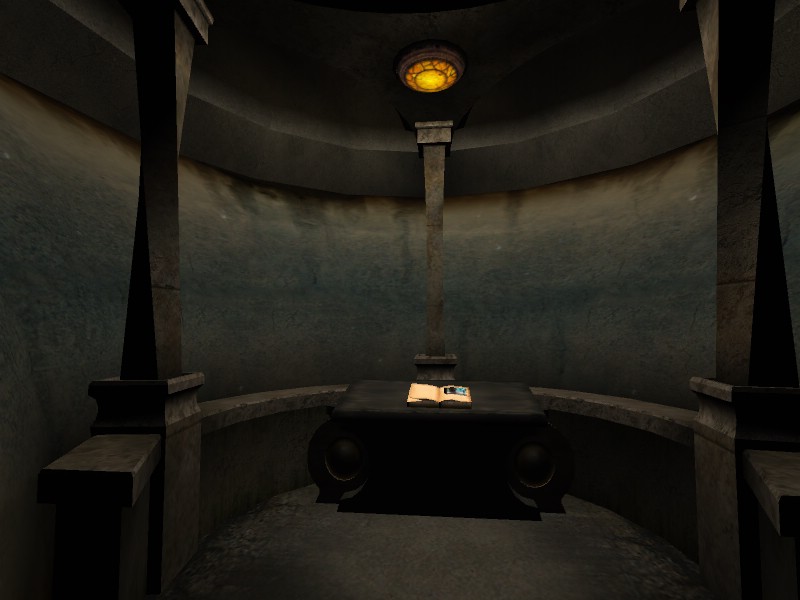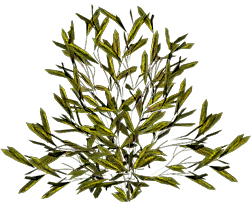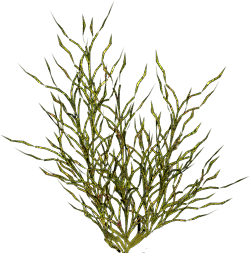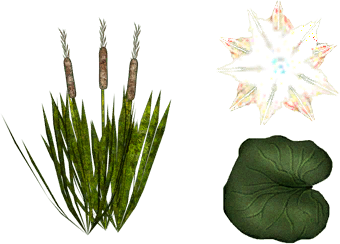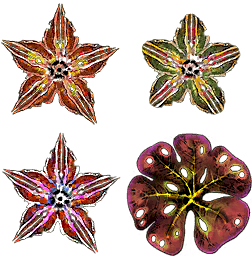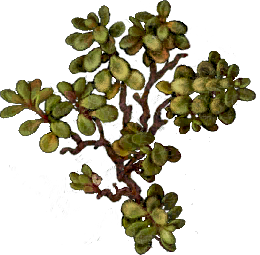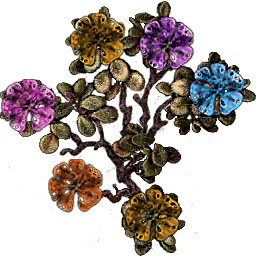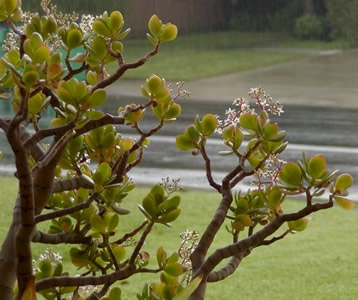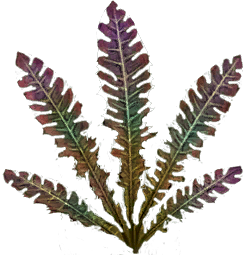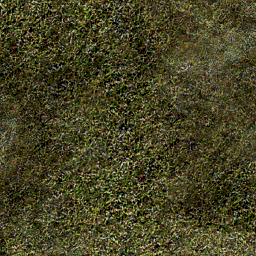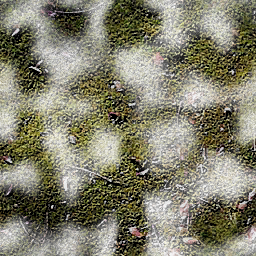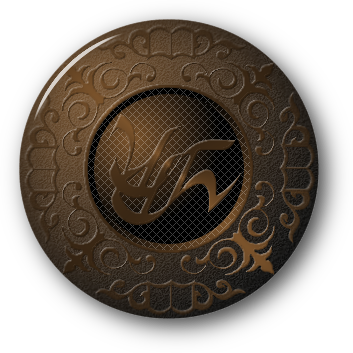

|
|
Eder Kemo was one of many Ages written during the garden binge of D'ni century 8100. King Kerath had abdicated in 6977, and a council made up of guild masters was ruling D'ni They most likely commissioned the garden Ages to gain popularity with the people of D'ni. Ages like Kemo would have been a welcome break from the dullness of the D'ni caverns. The council placed copies of the books in public linking libraries, such as the ones you can find in Bevin and Seret style neighborhoods. Kemo offered novelty with its constantly changing weather and themed planting areas, features that were not possible in the caverns. However, after a period of time, it was retired and other gardens were substituted, such as Tsogal and Delin. The Age was modified by Yeesha, including placing her symbol on the linking-in platform. In section 2, there is a stone pillar with her symbol on each side of it.
Section 1: The blue-gray band near the top of the rock wall surrounding the garden is a form of algae. It is fed by minerals in the rock and rainwater seeping through the stone. Spaced along the cliff rim are animals called Keanulint. They feed on the algae by hanging from a modified tail sting like a grappling hook.
Eder Kemo was designed to have different large plants in four main sections, so as to offer maximum diversity. The main features of the first district are Moss trees, so named because of the texture of their canopies. Note: the names assigned to the plants are ones that were listed by the D'ni Zoological Society or found in DRC documentation. They are not my own.
Scattered throughout the garden are rocks with a hidden character. Watch them during a rain shower, and you can see that they take on a metallic glint. There are also many types of wildflowers scattered throughout the garden. These rocks are also found in Eder Tsogal.
Yeesha and her Bahro followers chose to use this Age for propaganda purposes, and left many petroglyphs here. While that may be a harsh way of phrasing it, the intended effect is to slant the facts in favor of her interpretations of D'ni society. Yeesha was attempting to paint the entire society as corrupt and cruel by pointing up the actions of a few of them. One could think of it as if a person was telling the story of Al Capone and saying, "This is what the United States was like throughout its entire history". She never tells of the many good points their society had. Her father, Atrus, mostly concentrated on the positive acheivements of the D'ni, and worked to save the survivors and give them a new home. This glyph represents Kadish Tolesa. Several of the features of the Age can be seen in it; the circle with the dot in it probably represents the sun of the Age, and if you look at the glyph for the pyramid, you can see it repeated above it, with a line between it and the pyramid representing light traveling from the sun to the lens. There are two other circles in the painting, one of which would represent the moon or planet (whichever it might be) also visible in the sky of the Age.
I have confirmed that this glyph represents the Age of Rebek, where D'ni illegally brought ahrotahntee slaves and then hunted them for sport. It's important to remember that this was against the law, and was being investigated until the events of the Fall brought everything to a halt. I've adjusted the color values on this image and the following one to make the images stand out a little better.
I found an artist's recreation of this glyph that makes it even easier to see. While it's a guess, what look like tracks in the upper right seem to show hooved feet and three-fingered handprints used to assist in walking or climbing. If correct, then that could lead to Yeesha wanting the image defaced because it contradicts her hints that it was the Bahro that were imprisoned in Teledahn and hunted in Rebek. Bahro have three-toed feet.
The round glyph is thought to be a representation of Ae'gura, as the double line arch is similar to other Bahro art depicting the cavern. It looks like someone tried to erase it and the Rebek pictograph, since they are very blurred when compared to the artwork surrounding them. Since these were made quite recently, it was probably the Bahro or Yeesha.
This is Gahreesen. You can see ink beetles, the main fortress, maintainers, and the training wall. The figures that look a little like robots are Maintainer heavy armor, used when first entering a new Age in case the environment is unexpectedly hostile.
This is Teledahn. You can see the slaves who were sent to Rebek represented here. Since the petroglyphs are a form of propaganda, Yeesha presented all the negative sides of D'ni history with them, and none of the good. Note the design of the figures shown bound and in the cage, and compare them with the way the Bahro painted themselves. In her recorded speech in the Bahro cave, after the quest in Teledahn is completed, she implies that the Bahro were the ones imprisoned in Teledahn, but the Bahro did not draw themselves into this glyph. Tthe prisoners in this glyph have trapazoidal torsos and long legs. The Bahro represented themselves as having short legs and long, rounded torsos.
This bamboo grove is another mini-ecology for the visitor to enjoy. There is another smaller grove in section 2. Behind this grove is a glyph featuring a weeping eye symbol and several Bahro. The often have the weeping eye on or around their depictions of themselves, representing sadness or a sense of hopelessness. This glyph is also a prime example of how they drew themselves, and can be compared with other glyphs to determine whether they are present in them.
Compare the above image to the depiction of prisoners in Teledahn. The prisoners are consistently shown as having long, thin legs and squared-off torsos, while the Bahro show themselves as having shorter legs, rounded torsos, and three-digit hands and feet. Also note the lack of the weeping eye glyph anywhere in the Teledahn scene.
The gazebos in the Age feature a tile design that is similar to the Ahnonay symbol used by Guildmaster Kadish, who lived just before the Fall. The design is a common feature of gazebos in other garden Ages as well. Kadish may have been inspired by it, but the truth is unknown.
This glyph appears to be of D'ni people, with a possible king in the center. It matches the style used in the floating monument here and in Eder Delin.
This represents Kamkenta from the Kahlo Age. Kamkenta were flying animals that were ridden in competitive racing. The Kahlo bar was named for this Age, and it is suspected that the many viewers there were used to show images of the races. It is known that the DRC had the books for Kahlo, but the environment and budgetary concerns prevented them from releasing any. It was said that Kahlo was constantly swept by hurricane force winds that blew at an average of 100 MPH.
It is unknown as yet what these two glyphs represent.
This is a picture of the images lifted and isolated from the rock to display them better. My best guess would be that they are representations of non-human ahrotahntee and animals from Ages I am unfamiliar with. The figure on the lower left has three digits on each foot and hand, and they are clawed. The figure on the upper right has two-toed feet, and one hand has three fingers while the other has six. The figure on the far right seems to have humanoid figures inside it, so it might be a manned machine of some sort.
The plants in the middle of this picture are called Rainbow Ferns. They can also be found in Eder Delin. The plant in the foreground with green succulent leaves has been identified by Ainia as common Purslane, which can be found in California.
Section 2: These trees are called Trooms, and are also known as Brain Trees. Kemo Fireflies can be found in the largest grove of Trooms, and are the most gregarious of any to be found. They will even congregate around other animals.
These plants are called moss willows or ledge vines by the DZS. They are only found here in Eder Kemo. The Age maintainer's mark is located under the vines. I suspect that the mark may be the zero mark of the Age, but I cannot prove or disprove the theory since my KI does not show navigation data in any Age except D'ni.
This is a Bahro depiction of Yeesha, as they see her. To her left is the volcano and the Cleft, and Kerath's arch. The lines and circles attached to the Cleft may be a representation of the D'ni tunnel system.
This stylistic statue probably represents a king of D'ni. Since Kerath was the last king, it might even be him. A similar statue can be found in Eder Delin. It's probably not a coincidence that Yeesha's petroglyph was placed behind the statue of the king. Note how the overall shape matches the glyph by the Gate to the Bahro cave in Rudenna.
This represents Ahnonay, with fish and quabs around it. The black figure may be Kadish.
This glyph represents Water Ahnonay. It's surrounded by fish and quabs.
Section 3: These fungi are called Puffers for obvious reasons. They spray spores with each puff.
Here, you can see people riding horses and hunting. It is highly unlikely that the images are meant to represent this Age. The pictographs are identical to glyphs found on Amerindian rock painting at Newspaper Rock in Indian Creek State Park, near Moab, Utah. Many are even grouped the same. When Yeesha left Tomahna on her journey of self-discovery, it's known that she wandered for a time before settling down in the Cleft, and later followed the Great Shaft down into the caverns. It's entirely possible that Yeesha visited Newspaper Rock during her travels and sketched parts of the pictographs that interested her. If so, it would be her sketches that are reproduced here, since the overall arrangement of the petroglyphs do not exactly match the original art. The DRC notebook was planted here by Yeesha as propaganda. It tells a story about the third king of D'ni, Shomat, and how he committed genocide against an ahrotahn race and murdered his brothers. What Yeesha does not tell you is that Shomat later reformed, and started a custom for D'ni kings to have spiritual advisors to keep them on the right path. It's possible she intended for explorers to believe that this garden is the one mentioned in the notebook, but that's untrue. The events of the story took place in DE 387 (7270 BC). Eder Kemo was written approximately seven thousand years later, in DE century 8100 (The 5th century, AD).
Here is a section of the Newspaper Rock pictograph for comparison The colors are inverted to show the comparison better. This section is reproduced in the upper right side of the Eder Kemo rock art.
Here is a picture of Newspaper Rock, taken around 1972.
Section 4: This last environment contains water lilies, cattails, lichen, and a plant I do not know. The rainbow-colored fish are called Kemo, and the Age is named for them.
This is the exit room, and would have had a linking book back to the library where the visitor found the Kemo book. Yeesha wrote a linking book to Lower Gira and placed it here as part of her quest for explorers. This room is directly below the point where you first linked in, and is well protected from the frequent rain showers.
Plant life: Here are some pictures and sketches of various individual plants to be found in the garden.
Tentatively identified: This has been classed as possibly being a variation of Crassula, or Jade Plant. However, the flowers do not match those of the known varieties.
This plant was listed by the D'ni Zoological Society with the name "rainbow fern". It has yet to be associated with an Earth variety.
This plant was listed as "moss willow" or "ledge vine" by the DZS. DRC documentation lists it as a type of ivy. However, it has none of the characteristics of known ivy varieties. It has yet to be matched to any Earth plants.
There are two main types of groundcover, grass and moss.
|
Myst, the Myst logo, and all games and books in the Myst series are registered trademarks and copyrights of Cyan Worlds, Inc. Myst Online: Uru Live is the sole property of Cyan Worlds Inc. The concepts, settings, characters, art, and situations of the Myst series of games and books are copyright Cyan Worlds, Inc. with all rights reserved. I make no claims to any such rights or to the intellectual properties of Cyan Worlds; nor do I intend to profit financially from their work. This web site is a fan work, and is meant solely for the amusement of myself and other fans of the Myst series of games and books. |
